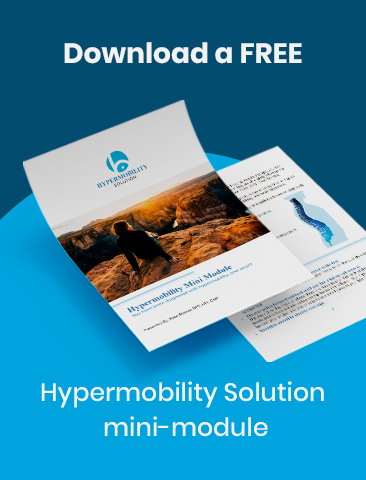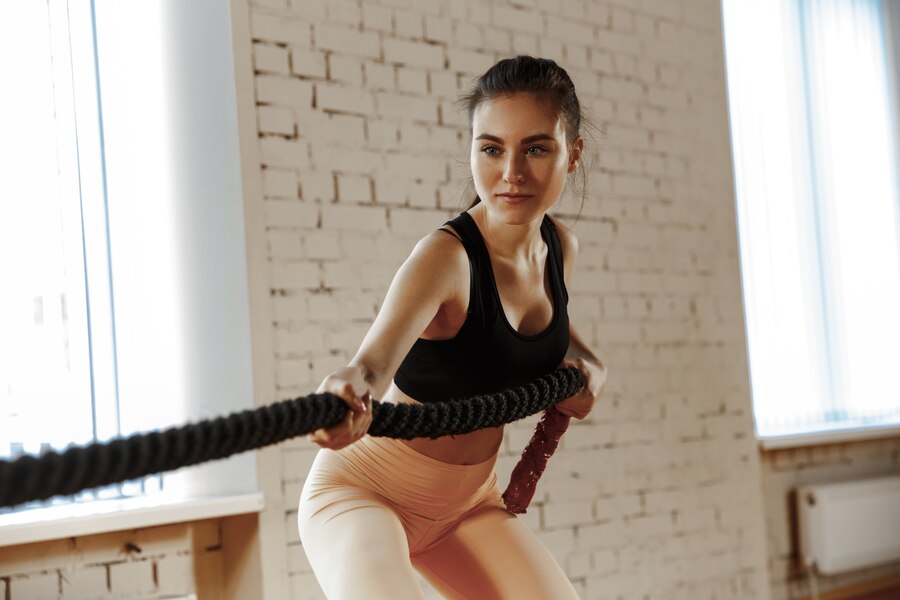Why is strength necessary in Hypermobility
This month, we will talk about strengthening.
Strengthening what? Everything!
This is an ongoing daily principle, not just when you have pain. Strength is your long-term fix.
If you are not working on your strength, you are getting weaker. Weakness will always be your enemy; whether it is because you are sick or busy, it works against you. That means that you have to accept some long-term principles.
Continue reading to learn the basics of Hypermobility and strengthening.
Doing Crunches & Sit-Ups
Core strength is super important when you are Hypermobile; crunches and sit-ups are everywhere, but that doesn’t mean they will do you any good.
I don’t recommend doing crunches and sit-ups if you are Hypermobile. Unless you are doing them handing off of a bar where you don’t have any fixed force in your back, they will not work well.
Even if you have good form and technique, it’s just too hard on your spine. Pick a core exercise where you move your legs and your arms while keeping your back supported.
Common Myths about Hypermobility & Strengthening
- More is always better: this may come as a shock, but the problem isn’t usually the exercise itself, but the way you do that exercise. For this reason, more is not better, but the right amount is better. Also, “no pain, no gain” is not correct either.
- Alignment is not important: using correct alignment is paramount. As with any joint injury, if you don’t use it correctly and in the correct position, it doesn’t get stronger no matter how many steps or reps you do.
- You should start big: don’t be afraid to start small with exercises. This means activating the correct muscles and getting control of them first before beginning to move.
What if I don’t have the time?
The truth is, time should not be a barrier.
You need 15 minutes, three days a week. If you can’t set aside a total of 45 minutes in your week to do your exercises, then you might need to look at your priorities and what your health is worth to you.
I would argue that getting stronger and being more productive and efficient for the rest of your life is well work the commitment of 45 minutes a week.
Don’t you agree?
How do I strengthen from home and without equipment?
If you don’t have equipment at home, you already have many options out there in your house-for example, water bottles.
- 16 ounce water bottles are equal to one pound weights.
- 32 ounces, two-pound weights.
So you’ve got options where you can use them for light, light weights and exercises.
You can also use milk jugs. If you have an old milk jug, you can fill it full of water, which gives you eight pounds.
If you like the size of these, but you want something a little bit heavier, then fill them up with some rocks or sand, dirt, whatever you’ve got around your space.
You can weigh them or estimate because it doesn’t matter if it’s two and a half pounds or three pounds. As long as it feels like it’s about the amount of weight that you need for whatever exercise you’re trying to do. That’ll work pretty well.
Proper Lifting Techniques
- Squat to lift and lower. Do not bend at the waist.
- Keep your lower back bowed in a while, bending over.
- Keep the weight as close to you as possible.
- Bow your back in and raise your head first.
- Do it with your feet if you must turn, not your body.
Reasons to Strengthen when you Have Hypermobility.
- Strengthens muscles, ligaments, and tendons, which increases support.
- Increases aerobic capacity/endurance.
- Increases bone density.
- Increases balance and proprioception.
- Improve self-confidence and quality of life.
Rules to Strengthen when you Have Hypermobility
- You will always need to strengthen.
- You will always have to work out three times a week.
- What you do to work out matters, and strength is always a priority.
- Stretching doesn’t count.
- All strength must focus on good stability and technique with controlled movements working muscles evenly across a joint.
- You should move the weight around your body, not your body around the weight.
The Bottom-Line
When you have Hypermobility, you have to make accommodations to decrease pain and increase strength.
By adding a strength training program to your routine three times a week and by following these suggestions, you will ideally see a significant difference.
Just remember, you always need to be making an effort towards strength training with Hypermobility.

About Kate

Kate Skinner is a Doctor in Physical Therapy, co-founder of Great Divide Physical Therapy, and creator of Hypermobility Solution.
Recent Posts






